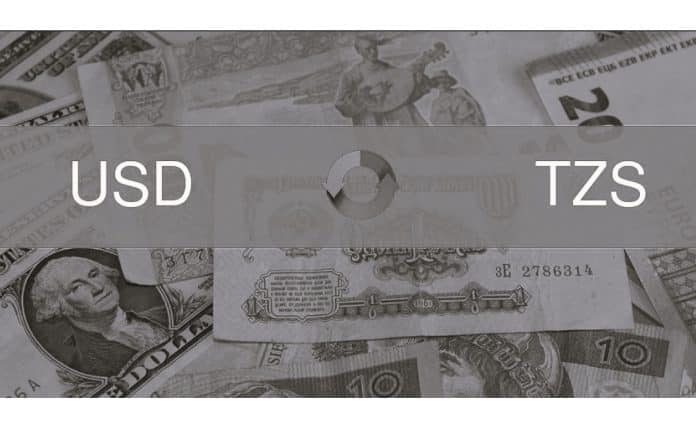A Journey Through Time: Exploring the Tanzanian Shilling to USD History
Step back in time and embark on a fascinating journey through the Tanzanian Shilling to USD history in terms of exchange rate fluctuations. In this article, we will delve into the factors that have shaped the exchange rate over the years, providing you with a comprehensive understanding of the currency’s value fluctuations.
The Tanzanian Shilling’s Value Against the USD Over the Years
The Tanzanian Shilling, the official currency of Tanzania, has experienced significant fluctuations in value against the United States Dollar (USD) over the years. Since its introduction in 1966, the Tanzanian Shilling has seen various highs and lows, influenced by several factors such as economic policies, political stability, and global events.
During the early years of the Tanzanian Shilling, its value against the USD remained relatively stable. However, as the country underwent political and economic changes, the exchange rate began to fluctuate more noticeably. In the 1980s, Tanzania experienced a period of economic turmoil, resulting in a significant depreciation of the Tanzanian Shilling against the USD. This depreciation was primarily driven by high inflation rates and a lack of foreign exchange reserves.
In the following decades, Tanzania implemented economic reforms aimed at stabilizing the currency and attracting foreign investment. These reforms, along with improvements in political stability, led to a gradual appreciation of the Tanzanian Shilling against the USD. However, the exchange rate remained susceptible to external factors such as global economic crises and fluctuations in commodity prices, which impacted Tanzania’s export earnings.
The Tanzanian Shilling’s value against the USD reached its peak in the early 2010s, driven by increased foreign investment and a growing tourism industry. However, in recent years, the exchange rate has experienced some volatility due to factors such as currency speculation, changes in global trade dynamics, and the impact of the COVID-19 pandemic. Despite these fluctuations, the Tanzanian Shilling has maintained a relatively stable value against the USD compared to other African currencies.
Factors Influencing the Tanzanian Shilling to USD Exchange Rate

Several factors influence the Tanzanian Shilling to USD history exchange rate fluctuations, shaping the value of the currency over time. One of the primary factors is Tanzania’s economic performance and stability. A strong and stable economy attracts foreign investment, which increases the demand for the Tanzanian Shilling and strengthens its value against the USD. On the other hand, economic instability, such as high inflation or a decline in export earnings, can lead to a depreciation of the currency.
Political stability is another crucial factor affecting the exchange rate. Political unrest or uncertainty can undermine investor confidence, leading to a decrease in foreign investment and a depreciation of the Tanzanian Shilling. Conversely, political stability and good governance can attract foreign investors, strengthening the currency’s value.
Global economic trends and events also play a significant role in shaping the Tanzanian Shilling to USD exchange rate. For instance, during times of global economic downturns or financial crises, investors tend to move their assets to safer currencies like the USD, leading to a depreciation of the Tanzanian Shilling. Conversely, when global economic conditions are favorable, foreign investors may seek higher returns in emerging markets like Tanzania, increasing the demand for the Tanzanian Shilling.
Monetary policy decisions by the Central Bank of Tanzania also influence the exchange rate. The Central Bank can use tools such as interest rate adjustments and foreign exchange market interventions to stabilize the currency and manage its value against the USD. These policy decisions aim to maintain price stability, promote economic growth, and ensure the competitiveness of Tanzanian exports.
Historical Events That Impacted the Tanzanian Shilling’s Value

Throughout its history, the Tanzanian Shilling has been influenced by various historical events that have had a significant impact on its value against the USD. One such event was the economic reforms implemented in the 1980s by President Julius Nyerere, known as the Arusha Declaration. These reforms aimed to establish a socialist economy, but they resulted in economic turmoil and a significant depreciation of the Tanzanian Shilling.
Another pivotal moment in the Tanzanian Shilling’s history was the liberalization of the economy in the 1990s. The government introduced market-oriented reforms, including the liberalization of foreign exchange and the encouragement of private sector growth. These reforms led to increased foreign investment and a gradual appreciation of the Tanzanian Shilling against the USD.
The global financial crisis of 2008 also had a notable impact on the Tanzanian Shilling. As the crisis unfolded, global investors sought safer assets, leading to a depreciation of the Tanzanian Shilling. However, Tanzania’s strong economic fundamentals and prudent fiscal policies helped mitigate the impact, allowing the currency to recover relatively quickly.
More recently, the COVID-19 pandemic has had a significant effect on the Tanzanian Shilling’s value. The pandemic disrupted global trade and tourism, two sectors crucial to Tanzania’s economy. As a result, the value of the Tanzanian Shilling against the USD experienced volatility, reflecting the uncertain economic conditions caused by the pandemic.
Comparisons of the Tanzanian Shilling to Other African Currencies

To gain a broader perspective on the Tanzanian Shilling to USD history it is essential to compare it to other African currencies. The value of the Tanzanian Shilling against other African currencies can provide insights into regional economic trends and trade dynamics.
Compared to currencies of neighboring countries such as Kenya and Uganda, the Tanzanian Shilling has generally maintained a relatively stable value. This stability can be attributed to Tanzania’s robust economic growth, prudent fiscal policies, and efforts to attract foreign investment.
However, when compared to stronger African currencies like the South African Rand or the Nigerian Naira, the Tanzanian Shilling may appear weaker. This difference in value can be attributed to factors such as the size of the economies, export earnings, and the level of foreign investment in these countries.
It is important to note that currency values are not static and can fluctuate based on various factors. Therefore, the value of the Tanzanian Shilling against other African currencies may change over time as economic conditions and trade dynamics evolve.
The Impact of Inflation on the Tanzanian Shilling
Inflation plays a significant role in shaping the value of the Tanzanian Shilling. High inflation erodes the purchasing power of the currency, leading to a depreciation against the USD. Conversely, low inflation or price stability enhances the value of the Tanzanian Shilling.
Over the years, Tanzania has experienced varying levels of inflation, impacting the exchange rate. In the 1980s and 1990s, the country faced hyperinflation, which significantly devalued the Tanzanian Shilling. However, through prudent fiscal policies and monetary measures, Tanzania has managed to reduce inflation rates and maintain price stability, contributing to the appreciation of the currency.
The Central Bank of Tanzania plays a crucial role in managing inflation and maintaining the value of the Tanzanian Shilling. Through monetary policy tools such as interest rate adjustments and open market operations, the Central Bank aims to control inflation and stabilize the currency. These measures help maintain price stability and enhance the competitiveness of Tanzanian exports in the global market.
Strategies for Exchanging Currency in Tanzania
When visiting Tanzania, it is essential to understand the currency exchange process to ensure a smooth financial experience. Here are some strategies for exchanging currency in Tanzania:
- Exchange at official exchange bureaus: Official exchange bureaus offer competitive rates and are regulated by the government. These bureaus provide a safe and reliable option for exchanging currency.
- Use ATMs: ATMs are widely available in major cities and tourist destinations in Tanzania. They offer a convenient way to withdraw Tanzanian Shillings using your international debit or credit card. However, be mindful of transaction fees and withdrawal limits.

Using of ATMs - Carry USD as a backup: While the Tanzanian Shilling is the official currency, USD is widely accepted in many tourist areas and hotels. It is advisable to carry some USD as a backup currency for emergencies or situations where it may be more convenient.
- Avoid street money changers: Street money changers may offer attractive rates but can be risky and potentially involved in illegal activities. It is best to exchange currency at authorized establishments to ensure the authenticity of the notes and avoid scams.
- Plan ahead: It is advisable to plan your currency needs in advance and exchange a sufficient amount before traveling to remote areas where currency exchange options may be limited.
By following these strategies, you can navigate the currency exchange process in Tanzania with ease and minimize the risk of encountering counterfeit currency or fraudulent activities.
The Future Outlook for the Tanzanian Shilling to USD Exchange Rate
Predicting the future exchange rate of this currency, given the Tanzanian Shilling to USD history, is a challenging task due to the complex and dynamic nature of the global economy. However, several factors can provide insights into the possible future outlook.
Tanzania’s continued economic growth and stability, coupled with efforts to attract foreign investment, are expected to have a positive impact on the value of the Tanzanian Shilling. The government’s commitment to infrastructure development, diversification of the economy, and promotion of tourism contribute to the country’s long-term economic prospects.
Global factors such as the recovery from the COVID-19 pandemic, changes in global trade dynamics, and shifts in commodity prices will also influence the Tanzanian Shilling’s future value. Keeping a close eye on these factors can provide indications of the currency’s trajectory.
Additionally, the Central Bank of Tanzania’s monetary policies and ability to maintain price stability will play a crucial role in shaping the exchange rate. Prudent fiscal management, sound monetary policies, and efforts to enhance the competitiveness of Tanzanian exports will contribute to the stability and strength of the Tanzanian Shilling.
While it is challenging to predict the exact future exchange rate, a combination of these factors suggests a positive outlook for the Tanzanian Shilling. As Tanzania continues to navigate the evolving global landscape, the currency’s value against the USD is expected to reflect the country’s economic progress and resilience.
Interesting Facts and Anecdotes About the Tanzanian Shilling’s History
- The Tanzanian Shilling is subdivided into 100 cents, with coins available in denominations of 1, 5, 10, 20, 50, 100, and 200 shillings.
- The Tanzanian Shilling features prominent figures from Tanzanian history on its banknotes, such as Julius Nyerere, the country’s first president, and Benjamin William Mkapa, the third president.
- In 2011, Tanzania introduced a new series of banknotes with enhanced security features to combat counterfeiting.
- The exchange rate of the Tanzanian Shilling is determined by market forces, with the Central Bank of Tanzania intervening to maintain stability and manage fluctuations.
- Tanzania is known for its vibrant tourism industry, attracting visitors from around the world. The availability of currency exchange services in tourist areas reflects the country’s efforts to cater to the needs of international travelers.
Understanding the Tanzanian Shilling’s Journey and Its Significance
As we conclude this journey through time, it becomes evident that the Tanzanian Shilling to USD history is intertwined with Tanzania’s economic growth, political stability, and global influences. From its humble beginnings to its current position in the global market, the Tanzanian Shilling has weathered various challenges and emerged as a resilient currency.
Understanding the factors that have shaped the Tanzanian Shilling to USD exchange rate provides valuable insights into Tanzania’s economic landscape and its relations with the rest of the world. The currency’s journey reflects the nation’s progress, highlighting the importance of economic stability, prudent fiscal management, and efforts to attract foreign investment.
As Tanzania continues to navigate the ever-changing global economy, the Tanzanian Shilling’s value against the USD will continue to evolve. By staying informed about economic trends, political developments, and global events, individuals and businesses can make informed decisions regarding currency exchange and financial planning in Tanzania.
So, fasten your seatbelts and take this newfound knowledge with you as you explore Tanzania and its vibrant culture. The Tanzanian Shilling’s journey is a testament to the country’s rich history, economic progress, and its bright future on the global stage.
For more articles related to Financial Services in Tanzania, click here!































